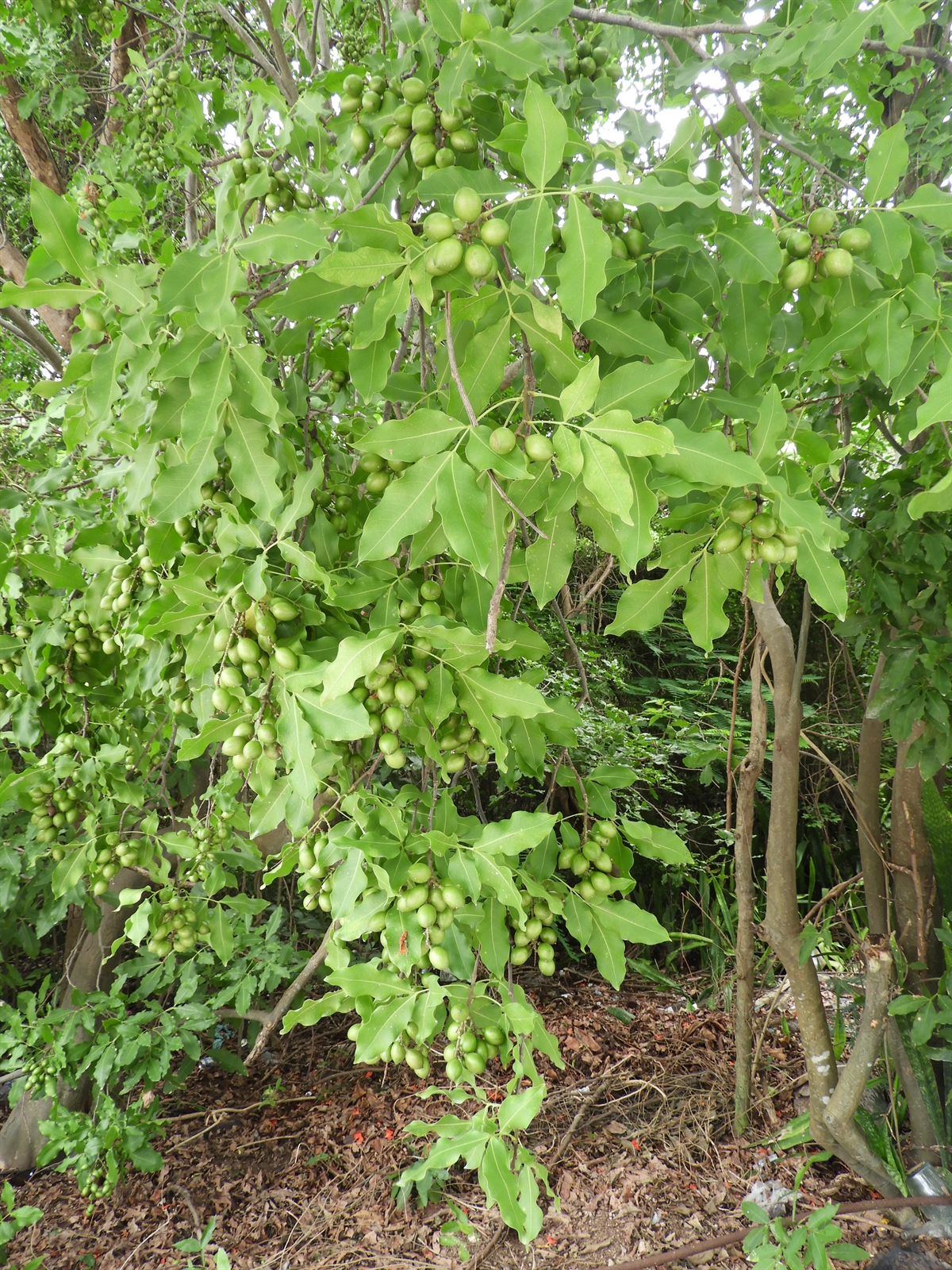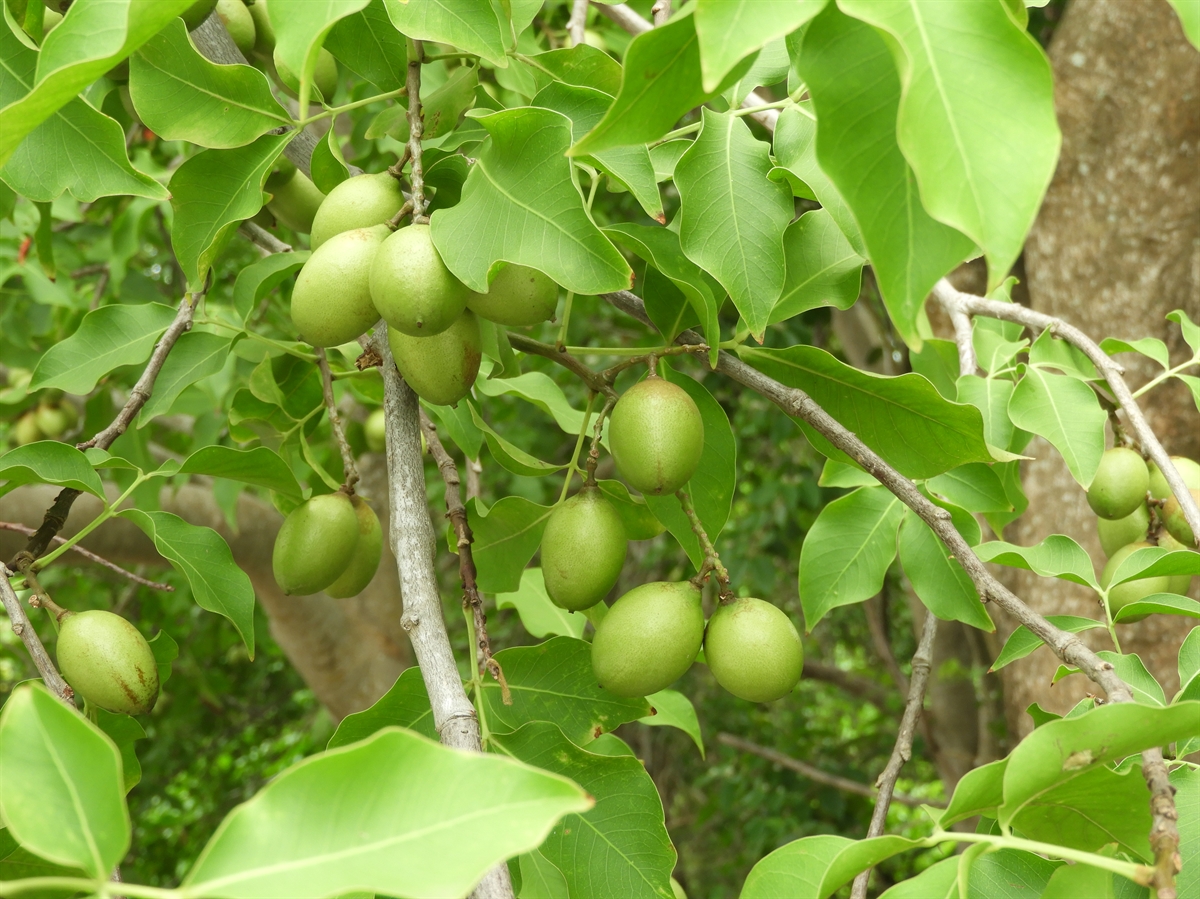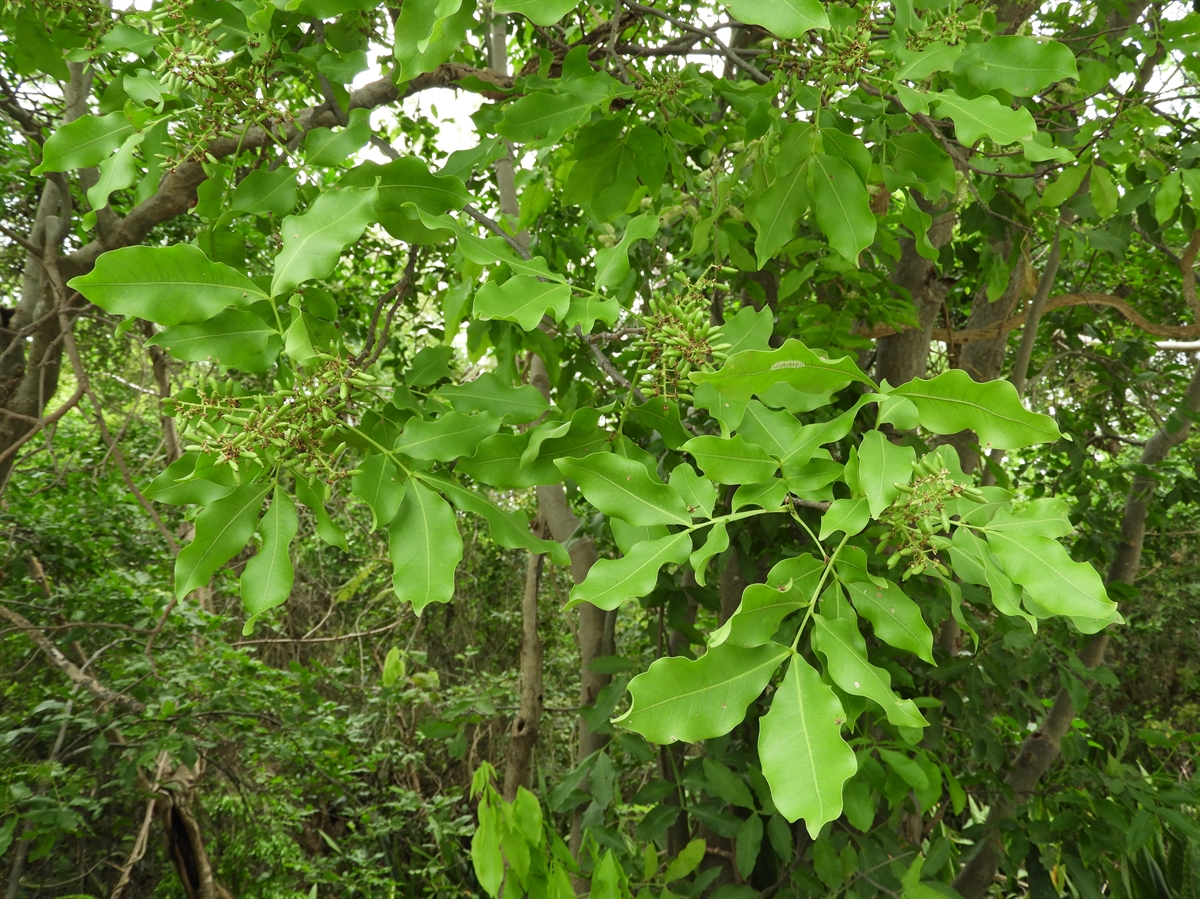Habit: Melicoccus bijugatus grows as a medium to large tree to 20 m in height with a trunk to 50 cm in diameter. The evenly bipinnate leaves are arranged alternately with 4 leaflets and a winged rachis. The leaflets are elliptic to ovate, to 14 cm in length with an entire (often undulate) margin and obtuse to acuminate leaf apex.
Melicoccus bijugatus is dioecious. The incomplete, imperfect, actinomorphic flowers are arranged in terminal panicles or racemes. The calyx has 4 – 5 green unfused sepals. The corolla has 4 – 5 unfused white petals. In staminate flowers there are 8 unfused stamens and no carpel. In carpellate flowers there are no stamens and a superior ovary with 2 locules. The fruit is a drupe (or 2 seeded berry) that is green at maturity.
Habitat: Melicoccus bijugatus grows in Human Altered environments (yards, gardens, farms
Distribution: Melicoccus bijugatus is NOT native to the Lucayan Archipelago but is grown on most of the islands. It is native to northern South America but has become widespread in the Caribbean region.
Medicinal/Cultural/Economic usage: Melicoccus bijugatus has been used medicinally in the Lucayan Archipelago to treat fevers, gastrointestinal problems, circulatory issues, and for teas.
It is grown for its edible fruits and makes a good shade tree.


